Thursday April 22nd
The Ramada in the Nisantasi district is central to all and a great hotel for the price. Once again, we partook in an elegant and elaborate breakfast buffet, including a fresh made to order omelet bar. A black espresso with sugar armed me for today’s adventure. Our guides name is Genghis, like Genghis Kahn, a kind elderly gentleman who didn’t seem to care much about our agenda beyond the planned activities.
 First stop and the old Ashkenazi Shul built in 1900 that still has an attending and vibrant congregation today. After getting out of the car our guide took us past the Galata tower and down steep winding narrow streets to an obscure security gate to enter the Shul. The intricately carved arc complimented the beautiful domed ceiling and stained glass windows. The Teva or prayer table was in the front of the sanctuary as opposed to in the middle as in a Sephardic Shul. This Shul has a unique second balcony. The women sit in the first balcony. A lovely gentleman gave a little talk about the history of this Shul and our guide translated.
First stop and the old Ashkenazi Shul built in 1900 that still has an attending and vibrant congregation today. After getting out of the car our guide took us past the Galata tower and down steep winding narrow streets to an obscure security gate to enter the Shul. The intricately carved arc complimented the beautiful domed ceiling and stained glass windows. The Teva or prayer table was in the front of the sanctuary as opposed to in the middle as in a Sephardic Shul. This Shul has a unique second balcony. The women sit in the first balcony. A lovely gentleman gave a little talk about the history of this Shul and our guide translated.
Following our guide out of the synagogue, we walked down a very steep grade to a busy boulevard where our driver picked us up. Next, we drove through terrible traffic, twisting, and turning, then driving across a bridge and past the outer city walls of the old Constantinople to the famous Ahride synagogue. 
 The Ahride is a restored Sephardic Shul. You can see it by appointment only and must submit your passports in advance as well as an application before your trip. We spoke Ladino with the curator, Mrs. Soriano. She definitely bore a resemblance to the Sorianos we knew as children in Seattle.
The Ahride is a restored Sephardic Shul. You can see it by appointment only and must submit your passports in advance as well as an application before your trip. We spoke Ladino with the curator, Mrs. Soriano. She definitely bore a resemblance to the Sorianos we knew as children in Seattle.
The Shul is famous for the Teva. It is in the center of the sanctuary carved and lacquered in the shape of the stern of a galleon, a reproduction of one of the ships the Sultan sent to Spain in the Inquisition to rescue the Jews and bring them to the Ottoman Empire.
We left the Ahride feeling very emotional and stopped for a brief glass of tea and a boreka. The driver found us and we proceeded to drive to the docks where the commuter ship goes back and forth to the Prince Islands all day. The Princess Islands are four little Islands in the Sea of Marmara where wealthy residents pass their summers. The most famous is Byukada where many Jewish people still have their summer residences. There are no cars on Byukada only walking or horse drawn carriages. The ship was full of people hauling suitcases full of stuff they were taking over to their houses to start getting them ready for the season.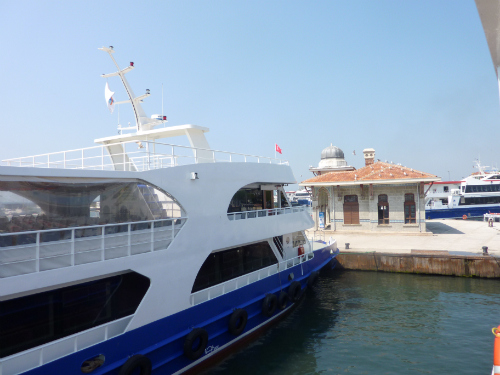 We docked in Byukada in 30 minutes and disembarked. The town at waters edge was already teaming with tourists and tourist shops. To our left was a row of fresh fish restaurants with the catch of the day displayed on ice in glass covered cases outside the restaurants and seating across, for el fresco dining on the edge of the quay. We picked our fish out and then a boy came round with a huge tray of mezze and we picked our mezze. Several kinds of eggplant, salad, and dolmas oh it was delicious.
We docked in Byukada in 30 minutes and disembarked. The town at waters edge was already teaming with tourists and tourist shops. To our left was a row of fresh fish restaurants with the catch of the day displayed on ice in glass covered cases outside the restaurants and seating across, for el fresco dining on the edge of the quay. We picked our fish out and then a boy came round with a huge tray of mezze and we picked our mezze. Several kinds of eggplant, salad, and dolmas oh it was delicious. 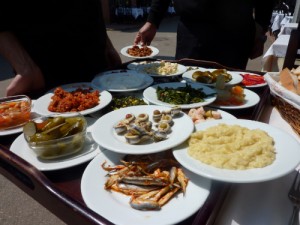
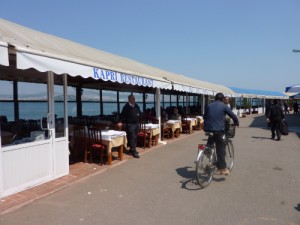
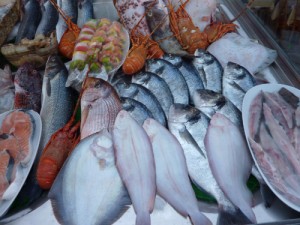
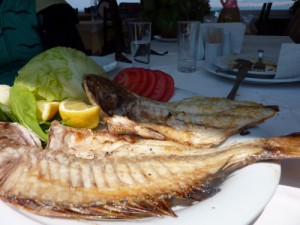
After lunch, we walked up the steep incline to where the horse drawn buggies were waiting and we hopped up and took a ride to the top of the island. The island is a very steep hill affording the palatial houses incredible views of the Bosporus and Istanbul. After we came back down, we passed quite a few ice cream carts, and lokma or Burmuelo stands. Hot Burmuelos out of the oil and drizzled with honey syrup, just great!
Next, we boarded the ship back to Istanbul proper but first it stopped on the other 3 Islands to pick up all kinds of passengers. Girls and boys in school uniforms or in the latest dress along with babushkaed old ladies, fashionable women, ultra orthodox young Muslims from some other country with only slits showing there carefully made up eyes, what a mélange of people. We docked and walked to the spice bazaar, much to Genghis’ disappointment, he wanted to lecture us at the archeological museum. Before the Spice Bazaar we stopped at the Rustem Pasha Mosque and looke at the beautiful blue Iznik tiles in awe. I had a litle visit from a pick pocket and my bathroom coins dissapeared from my pocket.
 The Spice Bazaar or Egyptian Bazaar is a riot of colors, smells and not to be missed. We entered through the back way passing all the gardening shops first, and then into the main hall with its high arched ceilings and stalls of spice vendors. Mixed in amongst the spice vendors are occasional souvenir and scarf shops also, embroidery and a few jewelry shops. The spices were piled high in an incredible array of colors, yellows, oranges, reds, ‘lady lady come I have pure saffron from Iran’ shouts a vendor as I pass by. There were so many different kinds of Baharat blends for kebab, for kufte for……. Now here on the right began shops with Lokum, nuts, every kinds of almond, peanut, hazelnut,, let me buy a piece of this one and some of that one. The store keeper wore plastic glove to scoop up my peanuts. They are so clean conscious here; you really can eat from anywhere. Finally, we tear ourselves away with much regret to go back to the hotel. I am exhausted. After Genghis dropped us off we ran upstairs to drop of f the days purchases and headed out to find somewhere for dinner. A block from the hotel we found a daily homemade diner, for regular people. The glistening white tiled cleanliness of the place was very inviting. The place was going to close in a few minutes at 8:00PM but the mother was still serving, dried bean fasoulia, stuffed Patligan (eggplant), rice and dolma. It was real home made food, so good. Talk to you tomorrow
The Spice Bazaar or Egyptian Bazaar is a riot of colors, smells and not to be missed. We entered through the back way passing all the gardening shops first, and then into the main hall with its high arched ceilings and stalls of spice vendors. Mixed in amongst the spice vendors are occasional souvenir and scarf shops also, embroidery and a few jewelry shops. The spices were piled high in an incredible array of colors, yellows, oranges, reds, ‘lady lady come I have pure saffron from Iran’ shouts a vendor as I pass by. There were so many different kinds of Baharat blends for kebab, for kufte for……. Now here on the right began shops with Lokum, nuts, every kinds of almond, peanut, hazelnut,, let me buy a piece of this one and some of that one. The store keeper wore plastic glove to scoop up my peanuts. They are so clean conscious here; you really can eat from anywhere. Finally, we tear ourselves away with much regret to go back to the hotel. I am exhausted. After Genghis dropped us off we ran upstairs to drop of f the days purchases and headed out to find somewhere for dinner. A block from the hotel we found a daily homemade diner, for regular people. The glistening white tiled cleanliness of the place was very inviting. The place was going to close in a few minutes at 8:00PM but the mother was still serving, dried bean fasoulia, stuffed Patligan (eggplant), rice and dolma. It was real home made food, so good. Talk to you tomorrow
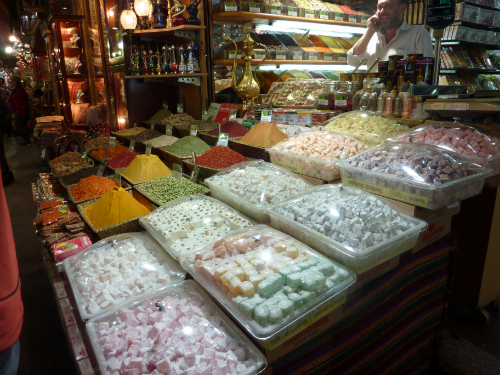
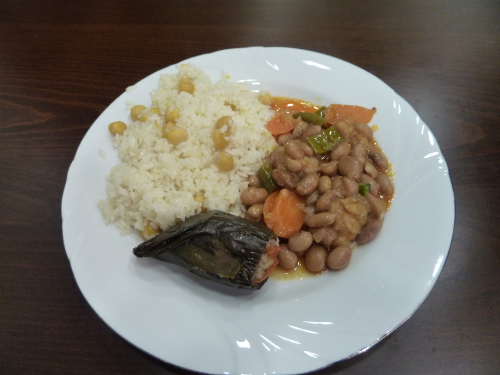
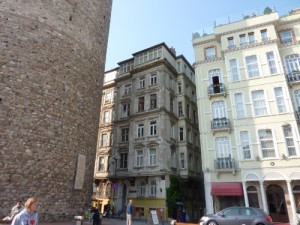
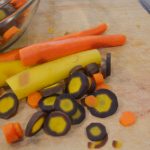
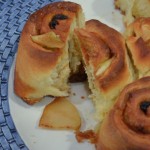
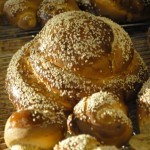

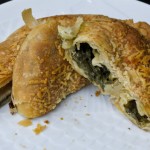
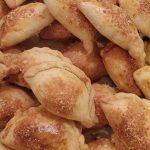
Leave a Reply